A three-phase cable refers to a cable used for three-phase alternating current electricity.. Three-phase alternating current is made up of three alternating current circuits with the same frequency, equal potential amplitude and a phase difference of 120° from each other, forming an electrical energy system. Three-phase cables are usually three-core cables., quad core and five core.
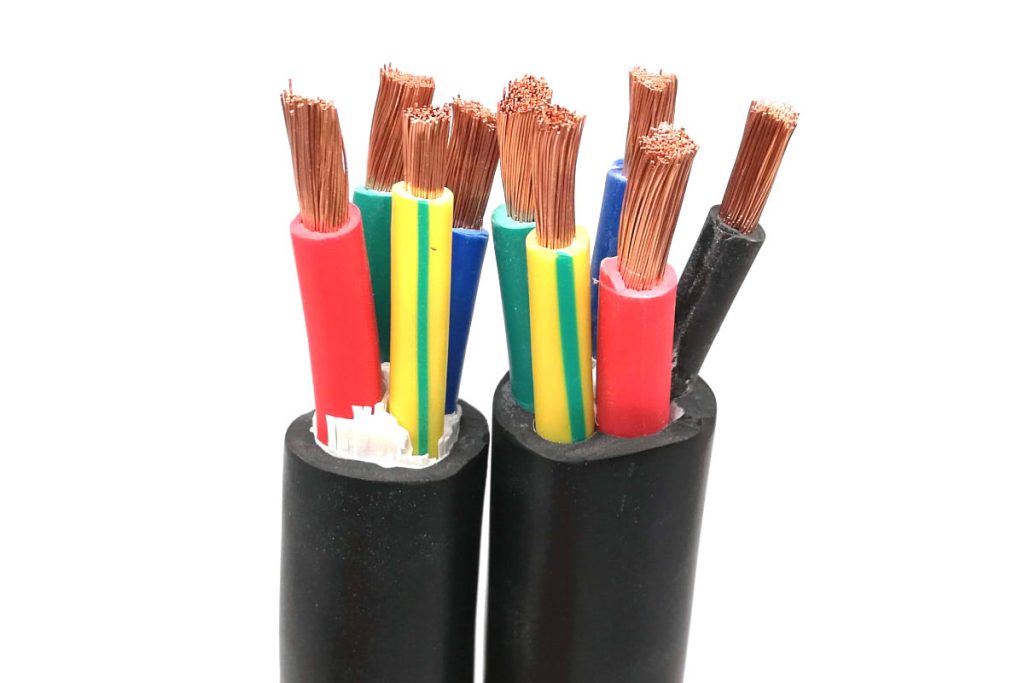
Table of Contents
- Number of Cores in the Three-Phase Cable
- Three Phase Cable vs.. Single Phase Cable
- Table of Technical Parameters for Three-Phase Cables
- What is a Three-Phase Energy System?
- Why use a Three-Phase Energy System?
- Use of Three-Phase Electricity
- Why Three-Phase Three-Core Cables Can Be Used in High-Voltage Lines?
- Conclusion
Number of Cores in the Three-Phase Cable
Three-Phase Three-Line Supply
This supply system consists of 3 phase lines. Three-phase cable supply 3 threads are mainly used in industrial and commercial applications, especially in older electrical power systems. Typically used to power large machinery, industrial production lines, electric motors and other high power loads. Due to the absence of a neutral conductor, three-line three-phase supply cannot directly provide the circuit needed for single-phase loads. It is only suitable for symmetrical three-phase loads, since an imbalance in the three-phase loads can cause a deviation in the neutral point, resulting in voltages that could damage electrical devices.
Three-Phase Supply of Four TN-C Lines
This supply system consists of 3 phase lines and 1 neutral line, connected in a star shape with the neutral point connected to ground. In low voltage systems where the neutral point is connected directly to ground, after connecting the casing of electrical equipment to ground, reconnects to the neutral line, called protection of the earth. This supply method is known as three-phase four-line. Three-phase cable supply 4 threads are mainly used in homes and commercial buildings. Can provide circuits for both three-phase and single-phase loads, meeting the requirements of various household and commercial equipment. Besides, Four-line three-phase supply allows for a more equitable distribution of electrical energy, reducing power losses.
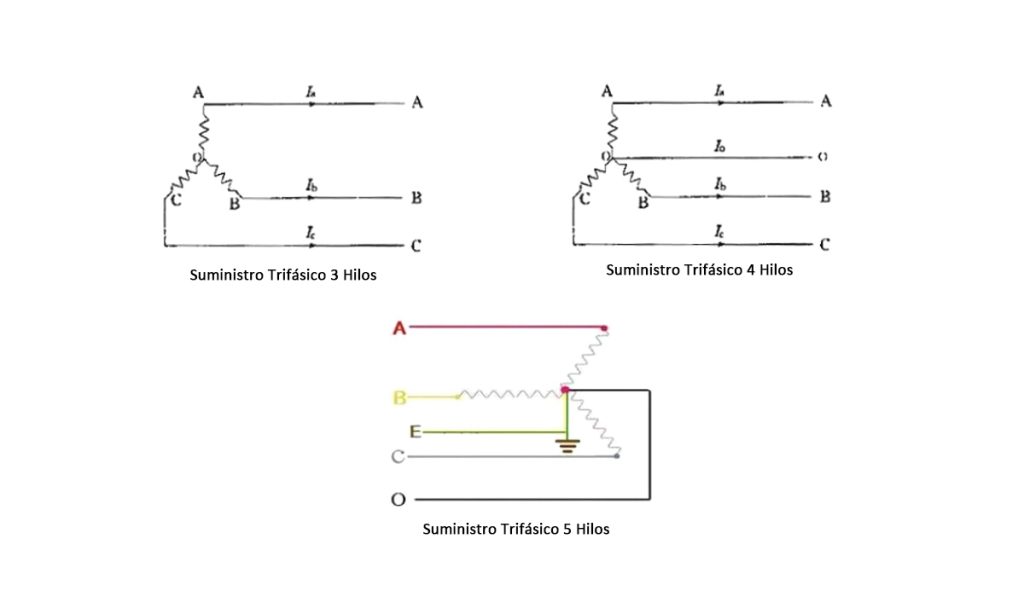
Three-Phase Supply of Five TN-S Lines
The five-line three-phase supply system consists of 3 phase lines, 1 neutral line and 1 ground line. A ground connection is added to the point where the neutral line is connected. This three-phase cable supply method 5 threads guarantee the security and reliability of the system, being suitable for systems low voltage power supply in industrial and residential applications.
In summary, Three-phase power cables can consist of three, four or five individual cables. If they are on the same cable, three-wire cables can be used, four or five cores.
Three Phase Cable vs.. Single Phase Cable
Not all three-wire cables or three-core cables are used in three-phase power systems. In single-phase power systems, two or three core cables are usually used.
Single Phase Cable 2 Cores
The single-phase cable 2 cores are generally used for connecting low power devices, like ground outlets, lights and engines. One of the nuclei is the phase line, and the other is the neutral conductor.
Single Phase Cable 3 Cores
The single-phase cable 3 cores adapts to the connection of medium to high power devices, like air conditioners, washing machines, refrigerators, etc. Includes a phase line, a neutral conductor and a ground conductor.
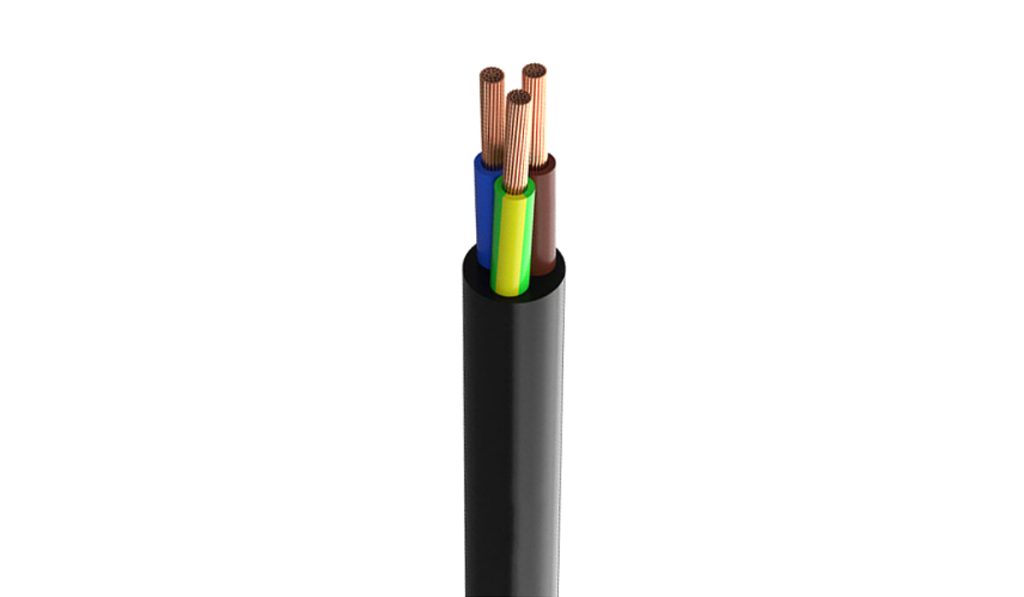
Therefore, Both single-phase and three-phase power systems can use three core cables. Choosing the specific cable for different power systems will depend on the cable specifications.
In residential electrical supplies, Three-phase power is generally used for entry to buildings or residential areas, with the need for a neutral conductor and commonly a ground conductor, using cables 4 o 5 cores. While the entrance line to the homes is usually single-phase, with cables 2 o 3 cores. Some high-power household appliances, like air conditioners, They also use the three-phase four-wire connection method, in this case, the input line must be three-phase.
Table of Technical Parameters for Three-Phase Cables
Current Capacity Table for Common Wires
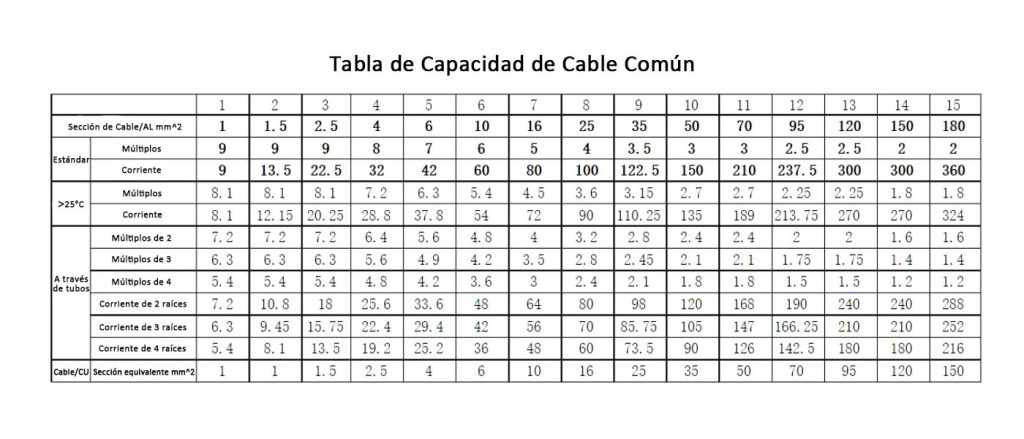
Use:
In the three-phase electrical cable 4 threads, The cross section of the neutral conductor is usually chosen around half of the cross section of the phase conductor.
In the single phase electrical cable, The cross section of the neutral conductor is equal to that of the phase conductor.
Method of Calculating Current Capacity for Three-Phase Cables
Phase current calculation formula for three-phase systems: I = P ÷ (U × 1.732 × cosΦ)
P – Power (W)
U – Voltage (380V)
cosΦ – power factor (0.85)
I – Phase current (A)
Actual calculation example:
Engine power P = 7.5 kW, Voltaje U = 380V
It is calculated that the phase current I = 13.3A
In a balanced three-phase circuit, The safe current rating for a copper conductor is usually 5 a 8 A/mm^2.
13.3 ÷ 8 = 1.66 mm^2,
The closest cable specification is 2.5 mm^2
Therefore, you must choose a multi-core cable with each core of 2.5 mm^2.
Common specifications of three-phase cables include 4x50mm^2+125mm^2, 3x50mm^2+2x25mm^2, among other.
Three Phase Cable Colors
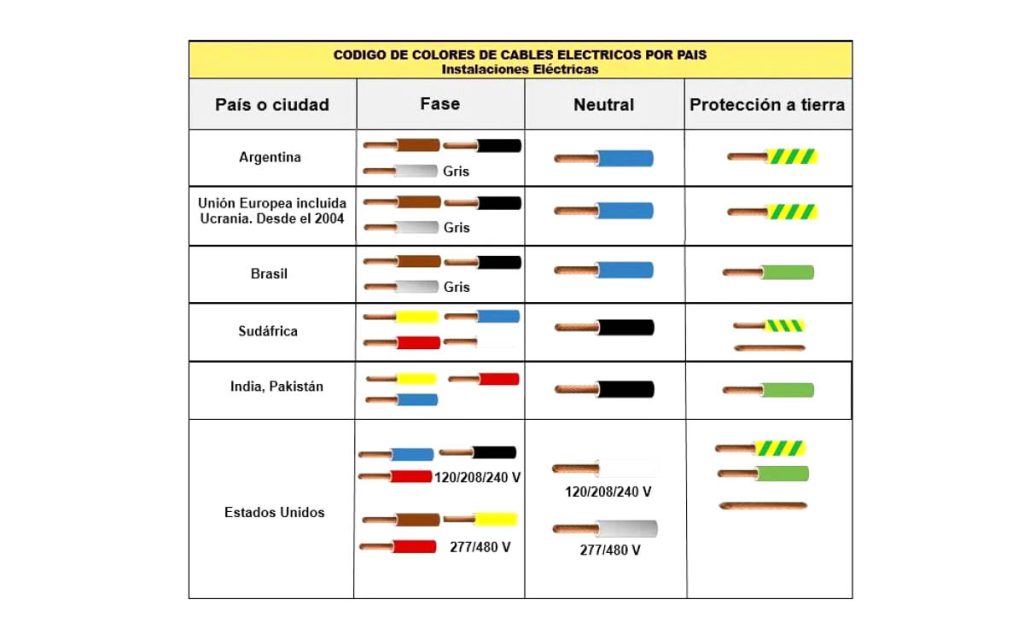
What is a Three-Phase Energy System?
Three-phase electricity, also known as industrial electricity, It is a way of transmitting electrical energy. The generator rotor is made up of three sets of coils that are separated by 120 degrees from each other. These three sets of coils can generate three alternating currents with equal frequencies, equal amplitudes and a phase difference of 120 degrees between them. The three-phase electrical supply consists of using these three currents as phase lines connecting them to different electrical devices. They can also be joined together in a common neutral conductor..
Three Phase Energy Systems vs.. Single Phase Energy Systems
The electricity generated by the generators is always three-phase. Each phase of the three-phase power together with the neutral point can form a single-phase circuit that provides electrical power to users..
Three-phase electricity is used in a wide variety of industrial applications, and most AC electrical equipment in the industry, like electric motors, They work with three-phase electricity, also known as three-phase four-wire system. In daily life, nevertheless, single-phase electricity is most commonly used, where one of the phases of three-phase electricity is used to power electrical devices over single-phase industrial cables.
Why use a Three-Phase Energy System?
Greater efficiency
Under the same power conditions, the cross section of the conductors of three-phase electricity is less than that of single-phase electricity, which saves conductive material and improves transmission efficiency. At a given voltage, the power of three-phase electricity is 1.732 times that of single-phase electricity, which means that three-phase electricity has fewer losses during transmission and use, being more energy efficient.
Greater Stability
The three phase currents of three-phase electricity form a balanced dynamic system, which makes the power output of the power supply almost constant. This reduces power supply instability problems, providing stable and reliable electrical power.
Wide Application
Due to its good stability and high efficiency, Three-phase electricity is widely used in large appliances and industrial equipment. Examples include air conditioners, elevators, industrial machinery by three-phase cables rough use, three-phase underground cable distribution lines, among others.
Use of Three-Phase Electricity
For electrical equipment, The correct choice between single-phase and three-phase electricity is crucial for efficient and stable operation. In equipment selection, We generally opt for single-phase electricity for devices with a power lower than 1 kW, like microwave, electric valves and rice cookers, which are small appliances for home use.
Secondly, for higher power devices that require a more stable power source, such as central air conditioners and electric heaters, we choose three-phase electricity. The correct correspondence between the energy source and the equipment not only improves the efficiency of use of the equipment, but also ensures its safe use.
Besides, although the stability of three-phase electricity exceeds that of single-phase, if the load is unbalanced, can cause voltage instability, affecting the normal operation of the equipment. Therefore, when using three-phase electricity, It is important to maintain a balance in three-phase loads.
Why Three-Phase Three-Core Cables Can Be Used in High-Voltage Lines?
A three-phase circuit is composed of three sinusoidal current sources with amplitudes, equal differential frequencies and phases. If each load in a three-phase circuit has the same impedance and characteristics, The charges in the three circuits are symmetrical. Under symmetrical loading conditions, The sum of the currents flowing through the neutral conductor is zero.
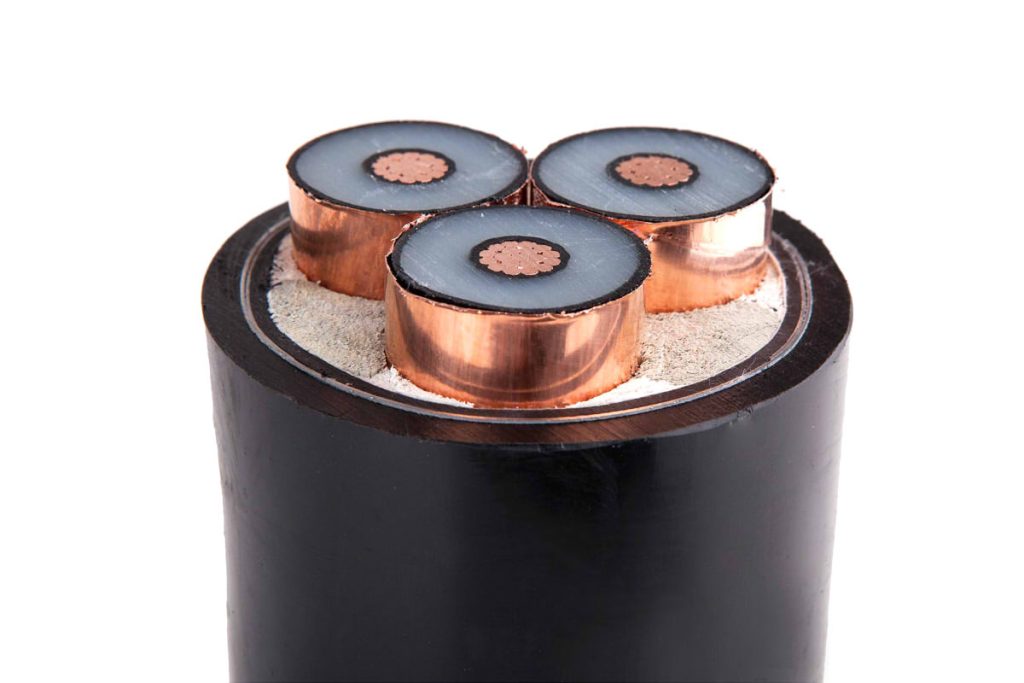
In daily life, common electrical devices are single-phase loads. The main characteristic of this type of energy consumption is that the load is dispersed and unbalanced. in this environment, it is easy to cause load impedance mismatch, load phase current and phase voltage. Therefore, phase voltages higher or lower than the rated voltage are likely to occur, which may cause malfunction or even damage to the load. Therefore, It is necessary to use the neutral conductor to maintain the three-phase voltage balance.
In systems of high voltage cables, Three-phase loads are balanced and do not require a neutral conductor for balance. Secondly, The installation of high voltage systems has high costs, and reducing a neutral line can improve economic efficiency and reduce investment costs.
Conclusion
In the complex universe of electrical energy, Understanding the importance and application of three-phase cables is essential. From economic efficiency to stability in high voltage systems, These cables play a crucial role in power transmission. Whether in robust industrial machinery or everyday household appliances, The choice between single-phase and three-phase systems directly impacts performance and safety. As a last resort, This knowledge enables us to make informed and efficient decisions in the management of electrical energy in various contexts..

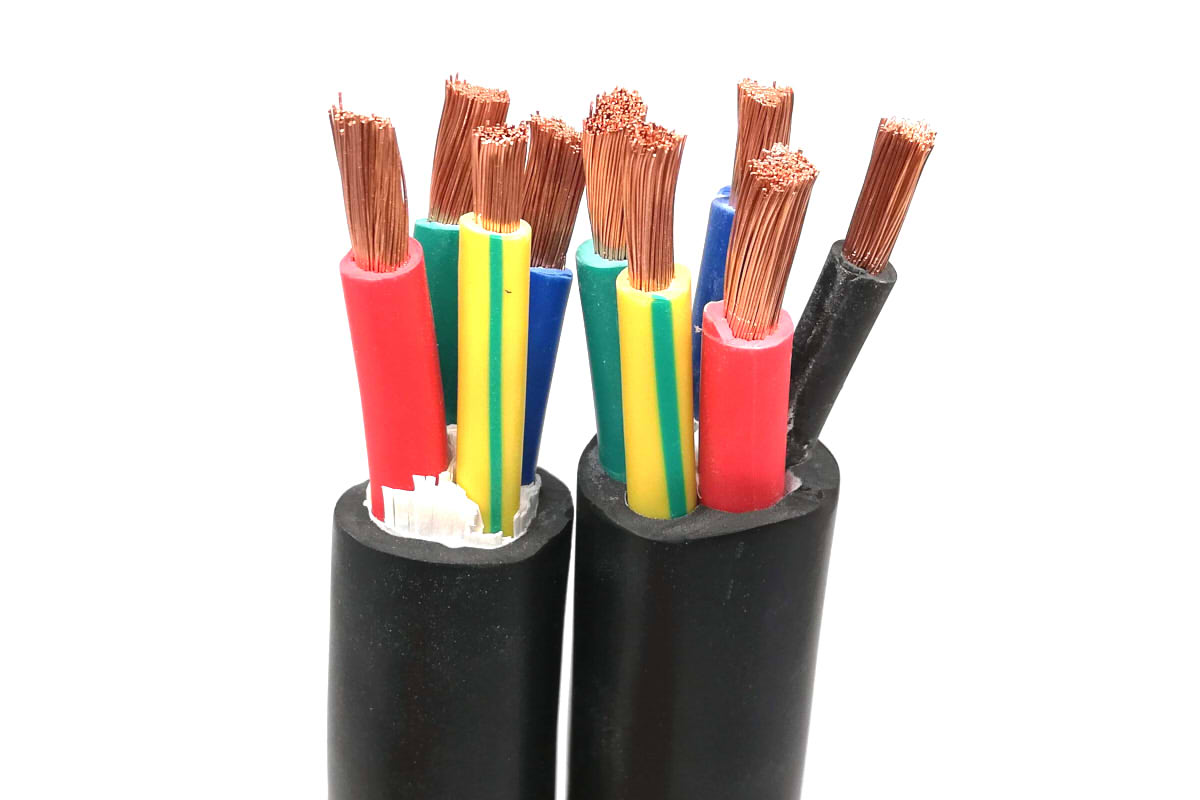
2 thoughts on “What is a Three Phase Cable? Applications and Technical Considerations”
Comments are closed.